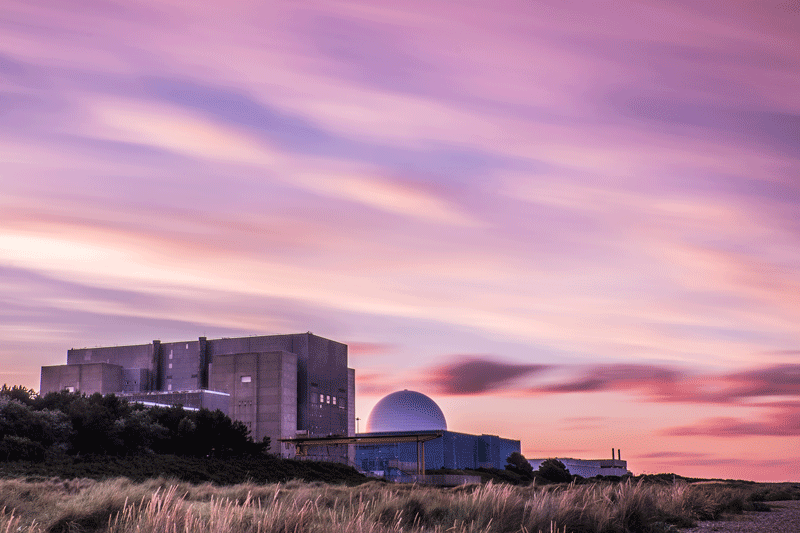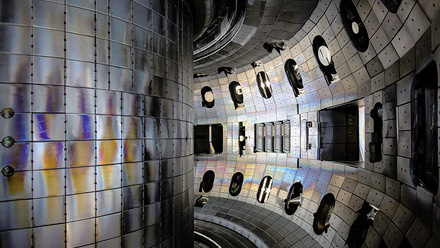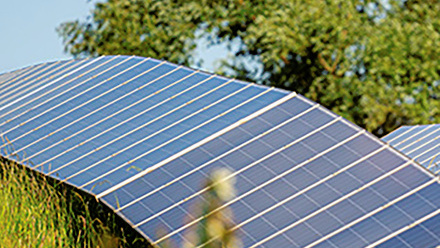On the horizon? Next steps for nuclear energy in the UK
Reporting on the event, ‘Next steps for developing the UK nuclear sector and delivering new build projects’, Andrea Gaini explores the market challenges ahead.

Reporting on the event, ‘Next steps for developing the UK nuclear sector and delivering new build projects’, Andrea Gaini explores the market challenges ahead.
‘Nuclear [power] is a fundamental step for all of us in ensuring that we build assets that are clearly needed by our economy…for the world we're going into, which is [trying to] deliver net-zero,’ said Humphrey Cadoux-Hudson, Chief Executive at Sizewell C, a proposed new nuclear power station to be built in Suffolk, UK.
Speaking at a recent Westminster Forum event on the future of the UK’s nuclear sector, he said, ‘At the moment, this effort is being driven by wind and solar…[as] a way of reducing the cost as we drive down CO₂ production, displacing coal and gas. But there comes a point in the modelling, when you do that, that you start having an overarching cost of creating a stable system. And that really points to the role of nuclear…combating intermittency by replacing it with a stable baseload power production.’
He continued, ‘I think there is now, amongst people modelling the electricity system, a fair amount of consensus on the need for low-carbon baseload, as [we] try and get down to zero.
‘There are two potential sources – nuclear and carbon capture and storage. But at the moment, carbon capture and storage is an experimental technology, we have no large-scale facilities to test, firstly, whether they really are net-zero, and secondly, whether they're sufficiently reliable to be part of the system.’
A nod to innovation
Mark Foy, Chief Nuclear Inspector at the Office for Nuclear Regulation, noted that regulators have an important role in facilitating a thriving nuclear sector. He reflected that the industry is considered by some as being overly conservative, lacking innovative thinking, and often relying on tried and tested solutions.
‘But this wasn't the case when the industry was born in the 50s and 60s – the industry has to provide an environment for new technologies to flourish over doing things differently, leading the way but also learning from other industrial sectors such as aviation, space, rail, oil and gas, and how they have used technology to their advantage.
‘Regulators have a critical role here in helping industry to work in ways that are safe, sustainable, and which offer [the] best value…in the interest of public safety, but also in the interest of advancement and progress.’
He added, ‘I think that we all recognise that the sector's ambition and project delivery cannot be successfully achieved without new, innovative, more effective ways of doing things. And as regulators, [we have an] important role in creating and sustaining the conditions where projects can flourish, facilitating the adoption of new ideas, approaches and new technologies where it is safe to do so.
‘Our aim is to reduce regulatory uncertainty and avoid undue burden to remove unnecessary barriers to progress – even if these barriers are real or perceived in many instances. Our commitment to embracing innovation is formalised in our own 2025 strategy. In practice, this means supporting industry to realise the benefits of new technology and novel approaches by providing a stable but progressive regulatory environment.’
He argued that industry and regulators alike ‘mustn’t shy away from opportunities that have been presented by these new technologies because they seem too difficult, and we must avoid fostering a culture where we are seen to be risk averse’.
Foy added, ‘Last year, we published our approach to regulating innovation, which provides clarity on how our enabling approach extends to innovative new projects within the nuclear sector, setting our commitment to ensure our regulatory systems remain flexible and outcome-focused to enable innovation and disruptive technologies to thrive.’
Backing for small reactors
The UK Government is backing the development of the world’s first Small Modular Reactors (SMR) with £210mln in new government funding for the Rolls-Royce SMR.
Matched by private sector funding of over £250mln, the investment will take forward Phase 2 of the Low-Cost Nuclear project to further develop the SMR design and take it through the regulatory processes to assess suitability of potential deployment in the UK.
Supporters of SMRs say they have the potential to be less expensive to build than traditional nuclear power plants. The modular nature of the components offers the potential for parts to be produced in dedicated factories and shipped by road to site – reducing construction time and cost. Rolls-Royce estimates that each SMR could power one million homes – equivalent to a city the size of Leeds, in the UK.
The role of ESG
A report from the Generation IV International Forum (GIF), Nuclear energy: an ESG investable asset class, found that nuclear has the ability to report at least as well as, or better, than other energy sources when it comes to Environmental, Social and Governance (ESG).
It reads, ‘Key to reporting is ensuring that companies and projects are established to the highest standards, as the industry generally does, but there is also an obligation on the investor community to ask all energy companies to report on the wide range of ESG to make sure all projects are considered on a consistent open and transparent basis.
‘Nuclear projects are vital to countries meeting their nationally determined contributions (NDC) and net-zero commitments. The investment community has an obligation to ask companies to report in consistent ways to provide nuclear the opportunity of accessing climate finance and making nuclear an investable asset class.’
Building investor confidence
‘The decarbonisation of the economy and objectives [to] achieving net-zero are clearly going to take a substantial level investment…The role of the private sector…in achieving that zero is critical,’ said Darryl Murphy, Head of Infrastructure – Real Assets at Aviva Investors, UK, while discussing the prospects of attracting more capital to the nuclear sector.
‘There's a large amount of capital available across the relevant sectors, in many cases, subject to the underlying risk profile of those investments. So, that capital is readily available for established technologies, certainly, such as wind and solar, but investors are increasingly having to consider how they will mobilise that capital for other technologies, such as hydrogen, carbon capture utilisation and storage (CCUS), and how those markets will develop.’
Murphy explained that the nuclear sector is historically one that has struggled to be considered in the investment market. This is due to a lack of policy design and efforts to make nuclear an attractive asset class.
He argued the sector becomes infinitely more investable if the government sees nuclear as a key component in the net-zero energy strategy and there is an Environmental, Social and Governance (ESG) case for nuclear – something which most companies now look for in every investment.
The Generation IV International Forum (GIF) recently published a report that addressed this issue (see box-out above). Murphy summarised, ‘It importantly set out a framework that financial investors could utilise, to assess ESG from a nuclear point of view. The ESG case for nuclear is critical if the large-scale capital required is to be mobilised...Without that ESG case, the detail on contractual and regulatory aspects will be frankly, irrelevant…This is not about government selling the answer to financial investors, it's making sure that investors have the right data and background in terms of policy and support, both from a government point of view and from developers, so they can make their own informed decision.’
The report recognises, Murphy explained, that investors have exclusionary criteria around nuclear energy and that the UK Government will not finance any nuclear energy-related expenditures under the framework. ‘I think the concern [this] raises is one of how clear the support…within governments [for nuclear] is,’ he argued.
‘A further concern is whether nuclear will be included in the…UK green taxonomy’. He noted that while these taxonomies were not definitive in their importance, ‘any exclusion of a technology is not going to be positive in any independent assessments, it will arm the case against the particular technology.
‘I would like to see greater public engagement on nuclear by governments…it's a topic that many politicians don't want to discuss’.
Also see Materials World, March 2021, for an article on the role of materials in the energy mix, including materials innovation for the safe operation and life extension of nuclear plants.
UK's nuclear numbers
- 16% – of electricity was produced through nuclear power in 2020
- 13 – current operable reactors
- 1 – nuclear plant under construction – Hinkley Point C
- 32 – reactors have been shut down
- Half – of the current nuclear capacity is expected to be decommissioned by 2025
Source: World Nuclear Association/UK Parliament







